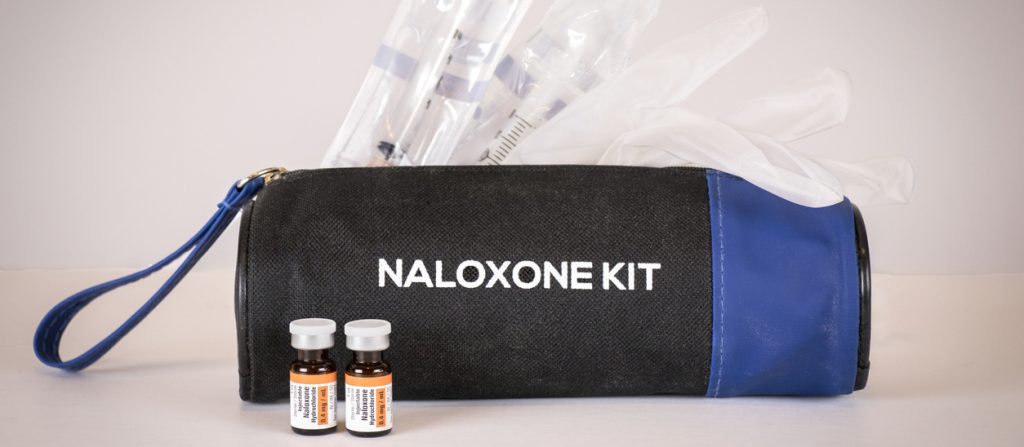Seven of the 10 leading causes of death in the U.S. are due to treatment-intensive chronic diseases. With an aging population, 6 of 10 adults now have at least one chronic disease, and four in 10 have two or more, reports the Centers for Disease Control (CDC) and Prevention. Combined with a growing shortage of physicians and resources consumed by COVID-19, a growing public health concern is becoming even worse.
Chronic diseases — such as heart disease, cancer, diabetes, chronic obstructive pulmonary disease, obesity, chronic kidney disease, HIV and others — increase the risk of severe illness from COVID-19. And as noted, the impact of chronic disease is compounded by the growing shortage of physicians. The Association of American Medical Colleges (AAMC) estimates by 2034, there will be a shortage of between 37,800 and 124,000 primary and specialty physicians.
Fortunately, policymakers and the medical community are recognizing the potential of pharmacists to help address these often-intertwined issues.
Collaborative practice agreements improve care access, outcomes
State-implemented solutions to addressing public health concerns include statewide protocols, standing orders, and laws expanding the scope of practice of pharmacists. Collaborative practice agreements (CPAs) are another method to utilize pharmacists in managing chronic diseases and to improve access, health outcomes, and quality of care provided by healthcare teams.
CPAs are formal relationships established between prescribers and pharmacists in which certain functions are delegated to the pharmacist such as initiating, modifying or discontinuing specified medication therapy. CPAs allow pharmacists to perform healthcare functions that are aligned with their education and training, but otherwise outside of their scope of practice. Currently, legislation or regulations for pharmacist practice CPAs exist in all U.S. states except Delaware.
Types of collaborative practice agreements
Patient-specific
- Applies only to the patient or patients listed in the agreement
- Limited to post-diagnostic care
- Frequently used for chronic disease management
Population-specific
- Applies to a patient population
- Requires consistency through a written treatment protocol
- Used for acute and chronic disease management
- Used for preventive care
CPAs and statewide protocols compared
CPAs are the most restrictive model of pharmacist authority because they require a formal relationship between a pharmacist and physician, and apply only to those signing the agreement. They’re initiated by partnering providers and are frequently implemented to help improve patient care and outcomes in chronic disease management. CPAs are broader in scope, allowing for expanded pharmacist practice roles after a diagnosis is made by a physician.
Statewide protocols are a less-restrictive model of pharmacist authority because they don’t require a provider partnership and apply to all qualifying pharmacists. They’re state-initiated by legislative bodies to address public health problems. Statewide protocols are narrower in scope, requiring pharmacist adherence to the standardized protocol for conditions that don’t require a diagnosis or for which a diagnosis is already established.
Components of a CPA
CPAs generally contain sections detailing the purpose and authority, the parties, the patient(s) or patient population, education and training, and quality improvement. Other key components of CPAs include informed consent, documentation and record-keeping, liability insurance, rescindment, communication, and review. The patient-care functions and treatment-care protocols make CPAs unique to the providers forming the agreement. These sections detail the scope of practice of the pharmacist while a party to the agreement.
How do collaborative practice agreements differ between states?
The majority of U.S. states allow for CPAs between pharmacists and healthcare providers. However, there’s significant variation between states on how they’re regulated.
Limitations on the types of providers a pharmacist can collaborate
States vary in the types of prescribers and the number of parties that can form CPAs. Some states such as Minnesota permit collaboration between pharmacists and other prescribers including dentists, optometrists, physicians, podiatrists, veterinarians, or advanced practice registered nurses. Other states such as New Jersey and Florida only allow pharmacist collaboration with a physician.
There’s also variation in the number of prescribers and pharmacists allowed to collaborate under a CPA. Nevada and Oregon are states that allow multiple pharmacists and multiple physicians to collaborate under the same CPA. Other states such as New York and Arizona only allow CPAs between a single pharmacist and single doctor.
Practice setting
The permitted settings a pharmacist may practice ranges from inpatient to non-institutional. New York state allows CPAs only in inpatient settings, whereas Pennsylvania allows for non-institutional CPAs. Texas amended the Occupations Code in 2019 to extend CPAs to any qualified and trained pharmacist without specification to practice setting.
Prescriptive authority for controlled substances
Certain states such as Mississippi grant pharmacist prescriptive authority to only non-controlled drugs. Conversely, New Mexico and North Carolina created advanced practice categories called “pharmacist clinician” and “clinical pharmacist practitioner” respectively. Under CPAs, these pharmacists have broad clinical functions similar to physician assistants. Following board-approved advanced training with clinical experience and assessment, they can prescribe controlled substances after registration with the Drug Enforcement Agency (DEA).
Level of board involvement in CPA establishment
The boards of pharmacy and medicine in states vary in their level of involvement in the establishment of CPAs. In Alabama, CPAs must be approved by the boards of pharmacy and medicine prior to engagement. However, Texas only requires that written protocols be submitted to the board, but the protocols don’t require approval prior to CPA engagement.
Patient-signed consultation agreement
Some states, such as Ohio, require the patient or caregiver to sign a consultation consent agreement with the pharmacist and physician prior to care.
Benefits of collaborative practice agreements
There’s much documentation in literature that team-based care increases quality and that health outcomes improve with collaborative drug therapy management. Pharmacists can help lessen the demand on the health system by practicing as an extension of physicians and prescribers.
Through CPAs, pharmacists can be embedded into physician practices or in community retail pharmacies. Tasks that are time-burdens to prescribers can be delegated to pharmacists via CPAs such as authorizing refills, adjusting doses, and performing medication therapy management. Engaging pharmacists into CPAs allows more rapid delivery of services at lower patient cost, increases patient access to care and medications, enhances adherence to evidence-based guidelines, and complements the knowledge of other team members to better care for persons with chronic diseases.
Centrally placed with proven capabilities and medication expertise, pharmacists can be leveraged to help address physician shortages as the prevalence of chronic diseases rises. A growing number of pharmacists are gaining clinical training through prost-graduate residencies, and currently there are 14 different specialties for pharmacist board certification. The pharmacy profession has transitioned to a broader role in patient-focused care, where pharmacists are equipped with clinical and medication knowledge and are primed to contribute to helping address public health concerns.
Policymakers are introducing and expanding legislation related to pharmacist statewide protocols and CPAs, broadening pharmacists’ scope of practice. As part of a healthcare team created through collaborative practice agreements, pharmacists can help make healthcare more accessible, less costly, and more efficient. If this sounds compelling to you, contact us. We’d love to share more.
Resources
Health and Economic Costs of Chronic Diseases, CDC
Strategies to Facilitate the Implementation of Collaborative Practice Agreements in Chain Community Pharmacies, Journal of the American Pharmacists Association
The Changing Face of Pharmacy Practice and the Need for a New Model of Pharmacy Education, Journal of Young Pharmacists




